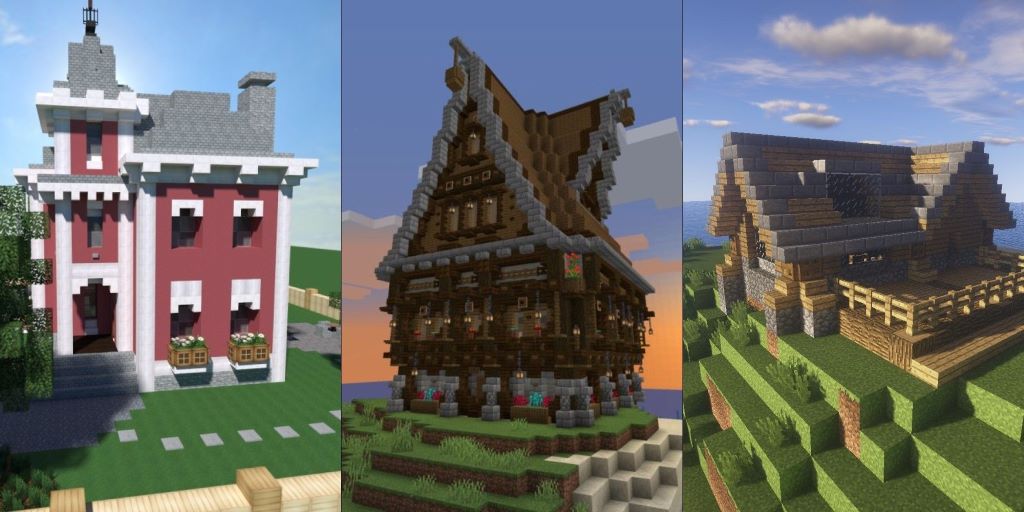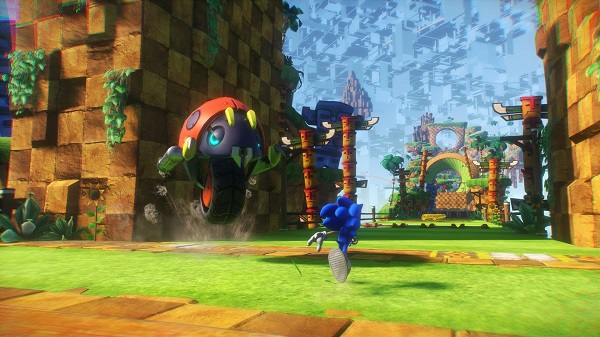Evolution: How Chevron Standards Have Improved Safety
September 15, 2025An introduction to working for a builders’ merchant
September 26, 2025Building impressive structures in Minecraft requires attention to detail, especially when it comes to roofing. Whether you’re a beginner or experienced player, creating the perfect roof can transform your basic shelter into an architectural masterpiece. At House I Love, we understand that roofing is often the most challenging aspect of Minecraft construction, yet it’s what makes buildings truly stand out.
The roof serves as the crowning element of any Minecraft build. It protects your interior spaces while adding visual appeal and character to your structures. From simple flat roofs to elaborate multi-tiered designs, the possibilities are endless when you master the fundamentals.
Learning how to build a roof in minecraft opens up countless creative opportunities. The key lies in understanding basic principles, choosing appropriate materials, and applying proven techniques that enhance both form and function.
Table of Contents
ToggleUnderstanding Roof Fundamentals
Before diving into complex designs, it’s essential to grasp basic roofing concepts. Minecraft roofs typically follow real-world architectural principles while adapting to the game’s block-based system. The most common roof types include gable, hip, shed, and flat roofs, each offering unique aesthetic and practical benefits.
Slope plays a crucial role in roof design. Steeper slopes create dramatic visual impact and work well for medieval or fantasy builds. Gentler slopes suit modern or minimalist designs. The 45-degree angle remains the most popular choice because it’s easy to construct and visually pleasing.
Symmetry often determines how professional your roof appears. Even simple designs benefit from balanced proportions and consistent angles. However, asymmetrical roofs can create interesting visual dynamics when executed thoughtfully.
Essential Materials for Minecraft Roofs
Material selection significantly impacts both appearance and construction difficulty. Wood variants offer warmth and versatility, making them perfect for rustic cabins, medieval houses, and traditional builds. Oak, spruce, birch, and dark oak planks each provide distinct color palettes.
Stone materials create sturdy, permanent-looking structures. Cobblestone works well for castle keeps and fortress walls. Stone bricks offer cleaner lines suitable for more refined builds. Smooth stone provides modern aesthetics for contemporary designs.
Specialized roofing materials add texture and authenticity. Clay blocks come in various colors, perfect for Mediterranean-style villas. Concrete blocks offer vibrant color options for creative builds. Copper blocks age naturally over time, adding realistic weathering effects.
Simple Roof Designs for Beginners
Starting with basic designs builds confidence and teaches fundamental techniques. The simple gable roof represents the easiest starting point. Create a triangular shape by placing blocks in ascending steps, then mirror the pattern on the opposite side.
Flat roofs require minimal effort but can appear boring without proper detailing. Add depth by incorporating different block types or creating raised sections. Consider adding gardens, solar panels, or decorative elements to make flat roofs more interesting.
Shed roofs slope in one direction only, making them perfect for lean-to structures or modern buildings. They’re incredibly simple to construct while providing excellent drainage aesthetics.
Intermediate Roof Building Techniques
Hip roofs create elegant, balanced appearances by sloping on all four sides. They require more planning than gable roofs but offer superior visual appeal. Start by outlining the roof’s perimeter, then work inward, maintaining consistent angles.
Dormer windows add character while providing natural light to upper floors. These small roofed structures project from sloped roofs, creating cozy alcoves and breaking up large roof surfaces. They require careful planning but dramatically enhance building aesthetics.
Multi-level roofs combine different heights and angles for complex, interesting profiles. Layer different roof sections to create depth and visual hierarchy. This technique works exceptionally well for larger builds or compound structures.

Advanced Architectural Elements
Gambrel roofs feature two distinct slopes on each side, offering maximum interior space while maintaining attractive proportions. The lower slope is steeper than the upper section, creating the classic barn-like appearance.
Mansard roofs slope on all four sides with two distinct angles, providing elegant French architectural styling. These roofs maximize usable interior space while creating sophisticated building profiles.
Cross-gabled roofs combine multiple gable sections at different angles, creating complex but visually striking designs. They work well for larger houses or buildings with multiple wings.
Creative Roofing Ideas
Curved roofs challenge traditional Minecraft building conventions while creating stunning organic shapes. Use stair blocks and slabs to approximate curves, creating domes, arches, and flowing forms that stand out from typical angular designs.
Green roofs incorporate living elements like grass, flowers, and small trees. They’re perfect for hobbit holes, earth shelters, or eco-friendly builds. Use dirt blocks and bone meal to create natural-looking rooftop gardens.
Mixed-material roofs combine different blocks to create patterns, textures, and visual interest. Alternate between wood and stone, or create checkerboard patterns using contrasting colors.
Common Roofing Mistakes to Avoid
Proportion errors frequently plague novice builders. Roofs that are too large or too small compared to the building below create awkward appearances. Aim for roofs that comprise roughly one-third to one-half of the total building height.
Inconsistent angles create amateur-looking results. Maintain the same slope angle throughout your roof design unless intentionally creating complex multi-angled structures. Use reference points and counting techniques to ensure consistency.
Ignoring details makes even well-proportioned roofs appear unfinished. Add gutters using stairs or slabs, incorporate chimneys for character, and consider window placement carefully.
Practical Building Tips
Planning prevents problems during construction. Sketch your design or build a small-scale model first. Count blocks and measure distances to ensure symmetry and proper proportions.
Use scaffolding or temporary blocks to mark roof lines before placing final materials. This technique helps visualize the finished product and makes adjustments easier.
Consider interior ceiling heights when designing roofs. Steep roofs create soaring interior spaces, while gentler slopes provide more intimate feelings.
Enhancing Roofs with Details
Chimneys add realism and character to most roof styles. Size them appropriately for the building scale, and consider using different materials for visual contrast. Brick chimneys work well with wood roofs, while stone chimneys complement stone buildings.
Gutters and downspouts enhance realism significantly. Use stair blocks or upside-down stairs to create convincing gutter lines. Add vertical elements using fences or walls to suggest downspouts.
Weathering effects make roofs appear lived-in and authentic. Randomly substitute a few roof blocks with slightly different materials to suggest age and wear.
Conclusion
Mastering Minecraft roof construction transforms ordinary builds into extraordinary architectural achievements. Whether you prefer simple gable roofs or complex multi-tiered designs, the key lies in understanding fundamental principles, choosing appropriate materials, and practicing proven techniques.
Start with basic designs to build confidence and skills. Gradually incorporate more advanced elements like dormers, curves, and mixed materials as your expertise grows. Remember that even simple roofs benefit from thoughtful proportions and careful attention to detail.
The most important aspect is experimentation. Every building project offers opportunities to refine your roofing skills and develop your unique architectural style. With patience and practice, you’ll soon create impressive roofs that elevate your entire Minecraft world.
Frequently Asked Questions
What’s the easiest roof design for beginners? The simple gable roof is perfect for beginners. It involves creating a triangular shape by placing blocks in ascending steps, then mirroring the pattern on the opposite side.
Which materials work best for Minecraft roofs? Wood planks offer versatility and warmth for most builds. Stone materials provide durability for castles and fortresses. Clay blocks add color for Mediterranean styles, while concrete offers vibrant modern options.
How do I make my roof look more realistic? Add details like chimneys, gutters, and dormer windows. Use mixed materials to create texture and incorporate weathering effects by randomly substituting blocks with slightly different materials.
What’s the ideal roof slope for most buildings? A 45-degree angle works well for most builds because it’s easy to construct and visually appealing. Steeper slopes suit medieval builds, while gentler slopes work for modern designs.
How can I fix a roof that looks too big or small? Roofs should comprise roughly one-third to one-half of the total building height. If your roof appears disproportionate, adjust either the roof size or building height to achieve better balance.
Read More:




